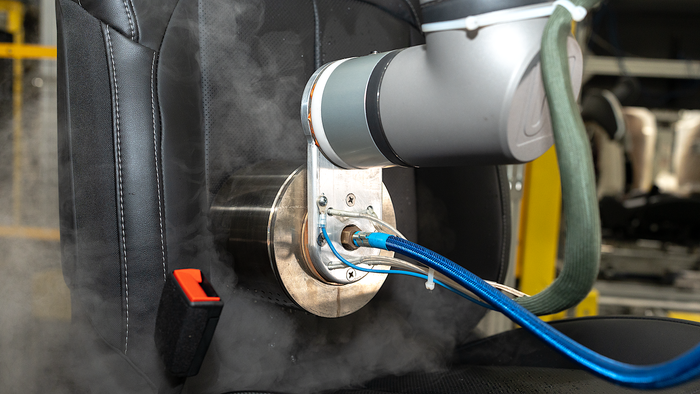Magna Drives Auto Industry Toward AI Inspections
Nov 05, 2024
Magna Drives Auto Industry Toward AI Inspections
Inspecting the components used to assemble new cars is a tiresome process that benefits from the application of artificial intelligence (AI) systems that augment human inspectors, according to Todd Deaville, the vice president for advanced manufacturing innovation at Tier 1 supplier and contract manufacturer Magna International.
“If you think about seating and fabrics getting wrinkles, you get variability in some of these processes,” he said. “They are incredibly complex processes,” he added.
This can lead to flaws in products that inspectors must catch, but that job is also hard. That’s because it requires strict attention to detail to spot issues, and that focus tends to fade over the course of a shift. “It is really, really hard to maintain that over hours,” Deaville noted.
Manufacturers are using trained AI systems to monitor production, but the utility varies depending on the application. For monitoring assembly processes where the system is just ensuring that all of the required components are present, AI works very well, according to Deaville. “Is a component present? That is relatively easy to train in a model,” he said.
But other jobs are more challenging, especially painted Class A surfaces. “It is one of the most challenging applications you can go after,” said Deaville. “Paint is subjective, so to train that into models takes some time. You have to deal with false positives and false negatives.” Nevertheless, Magna does employ some AI-based models on class A surface inspections, he said.
Related:Nissan Uses AUTIS Inspection System to Slash Paint Defects

The AI inspection system can check when Magna's Smart Steam system has eliminated wrinkles from set upholstery. MAGNA INTERNATIONAL
Even tougher than that is inspecting tiny features on parts to ensure precision. “There are more metrology applications where you’re trying to measure feature size,” said Deaville. “That’s not there yet. Laser systems do that directly, but the AI-based models are not there yet.”
Magna has had success with this in its R&D department, so it could be a viable technology for production purposes within a few years, he predicts. The problems such systems identify are typically flashing on a part from material that squeezed out of the edges of a mold or flaws where a mold got dirty. “Maybe there’s an imperfect trim edge or radius,” he said.
EV batteries have proved to be very susceptible to incredibly minor assembly variations, so that is another area that will benefit from AI-based inspections. The aim of such systems is to not only catch flawed parts but to provide feedback that lets the factory reduce their occurrence or even prevent them entirely.
“That system can identify where it likely occurred and get to the root cause,” Deaville said. This is especially true of batteries. “Battery is a very high value, very high risk part,” he said. “You want complete traceability.”
Related:Magna Supercharges ADAS with 5G
Without that, carmakers are forced to recall more vehicles that were actually affected by problems because they can’t identify exactly which parts are affected.
An AI inspection system sounds exotic, but it is really just a camera connected to a computer or in some cases just a camera with some built-in intelligence to flag when it sees something that doesn’t match the pattern it's looking for. “It can be as simple as something that looks like a gamer PC,” Deaville said. “Or you can do on camera with an embedded processor if you get the software thrifted to the point it can run locally.”
Another positive aspect of training an AI based on human inspectors is that people might be doing things that are subconscious for them, so those factors might not be documented. “Operators who have a lot of experience do things they may not know they’re doing,” Deaville said. “How do you capture that? These tools help with that.”